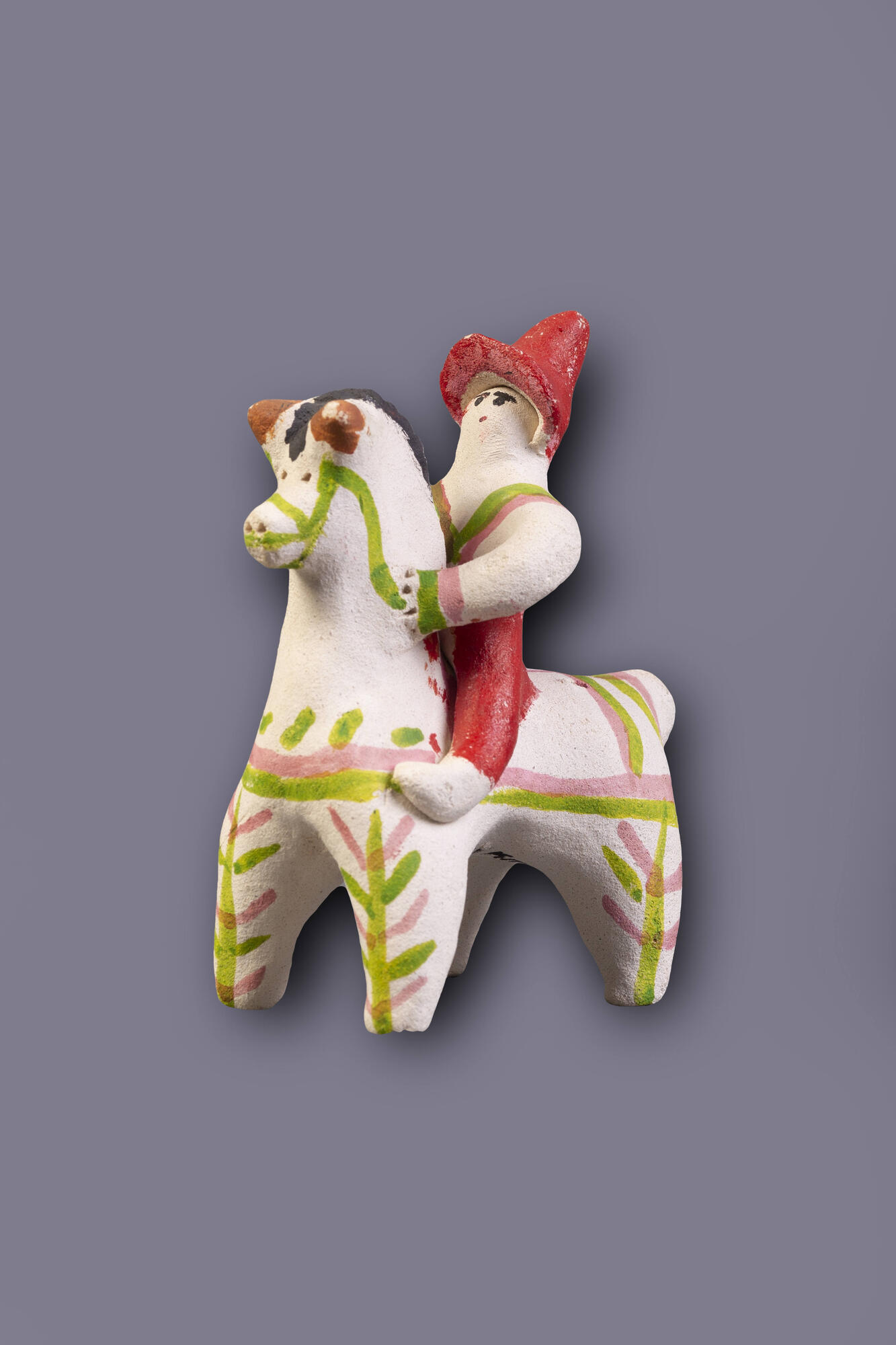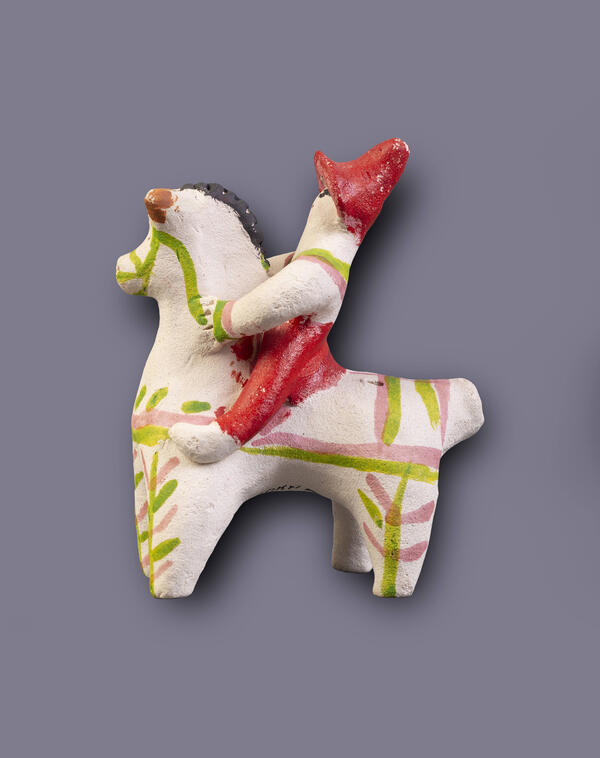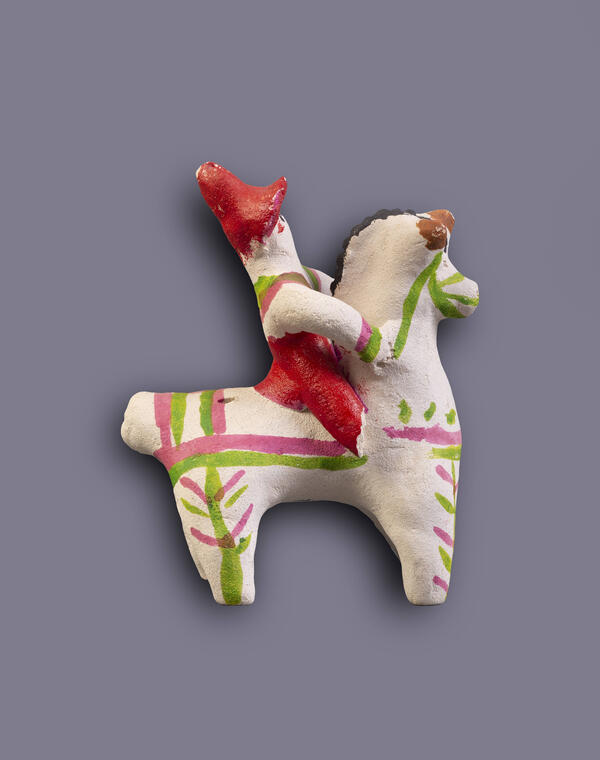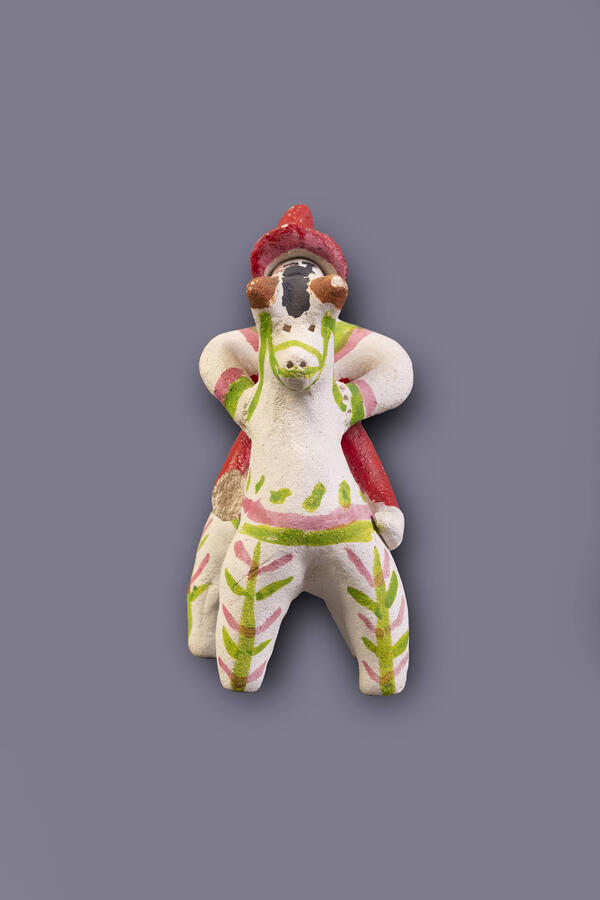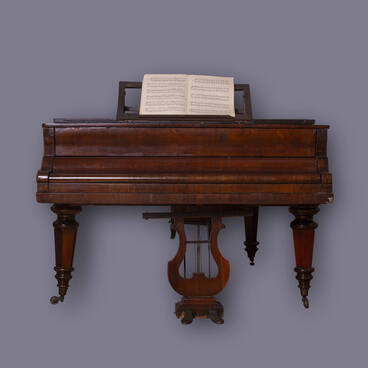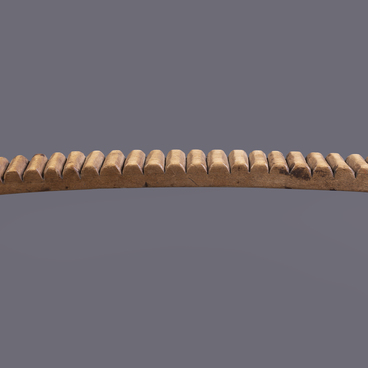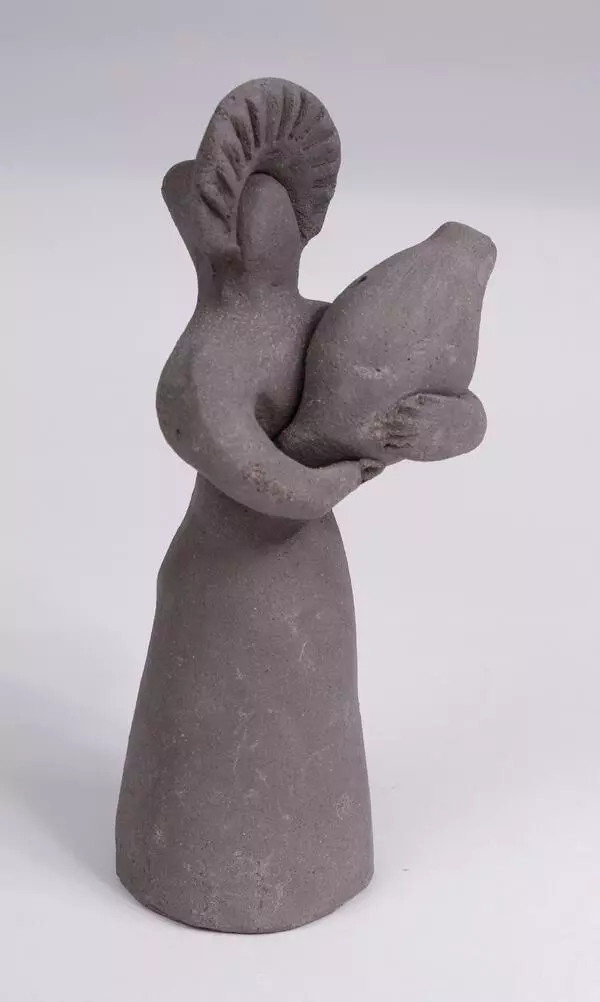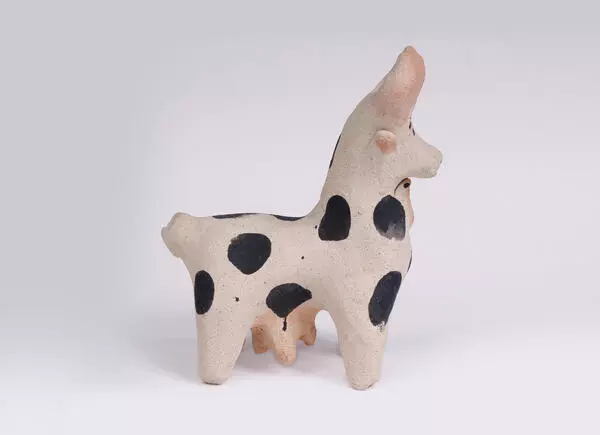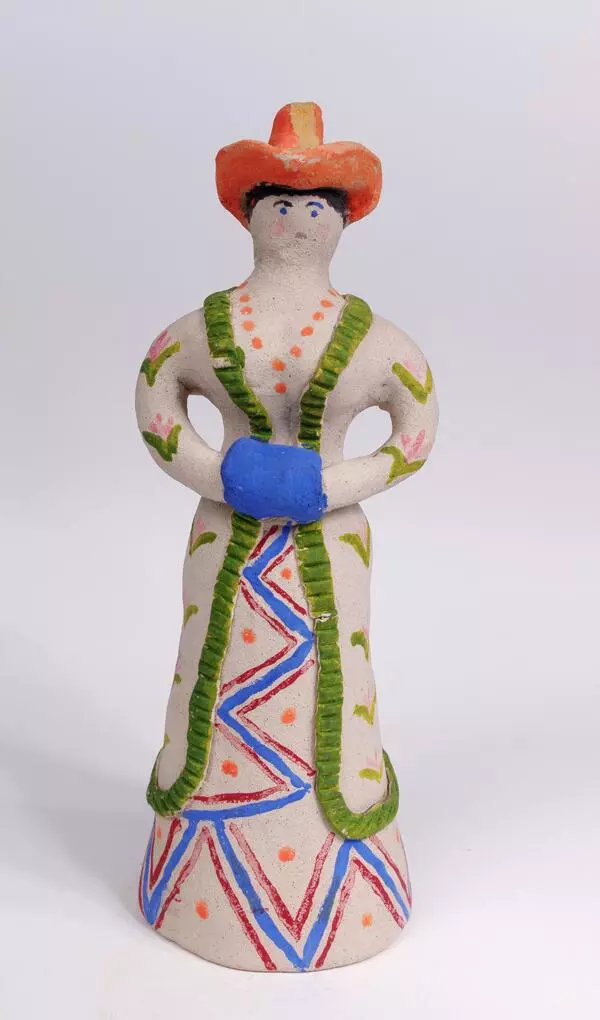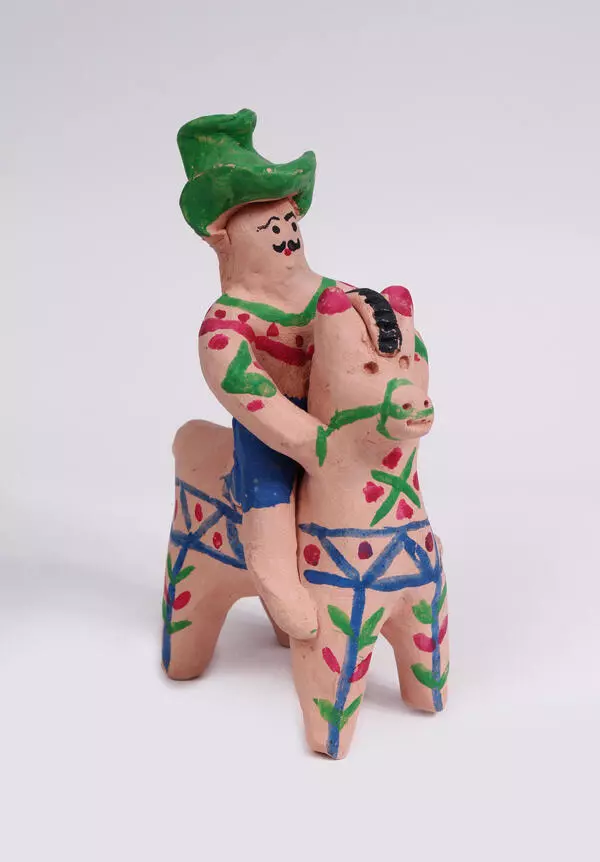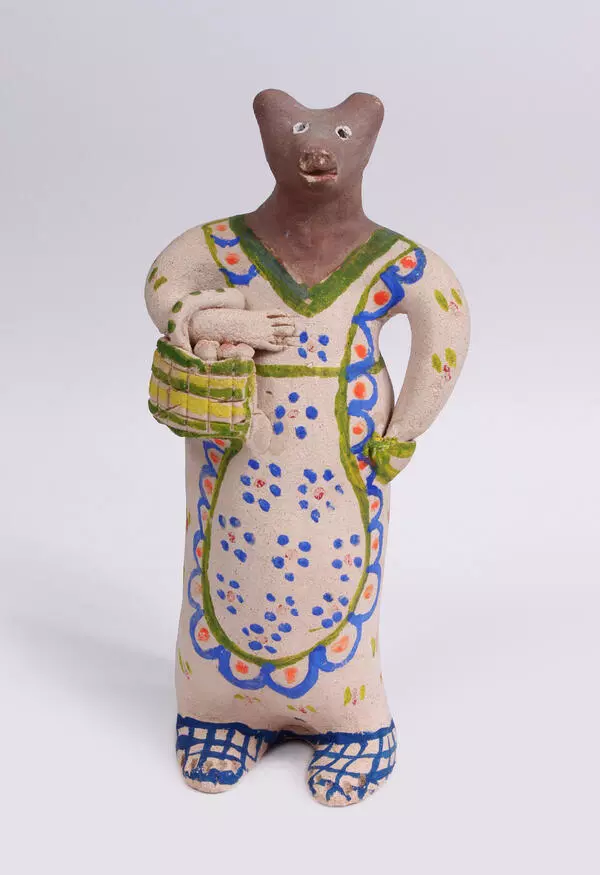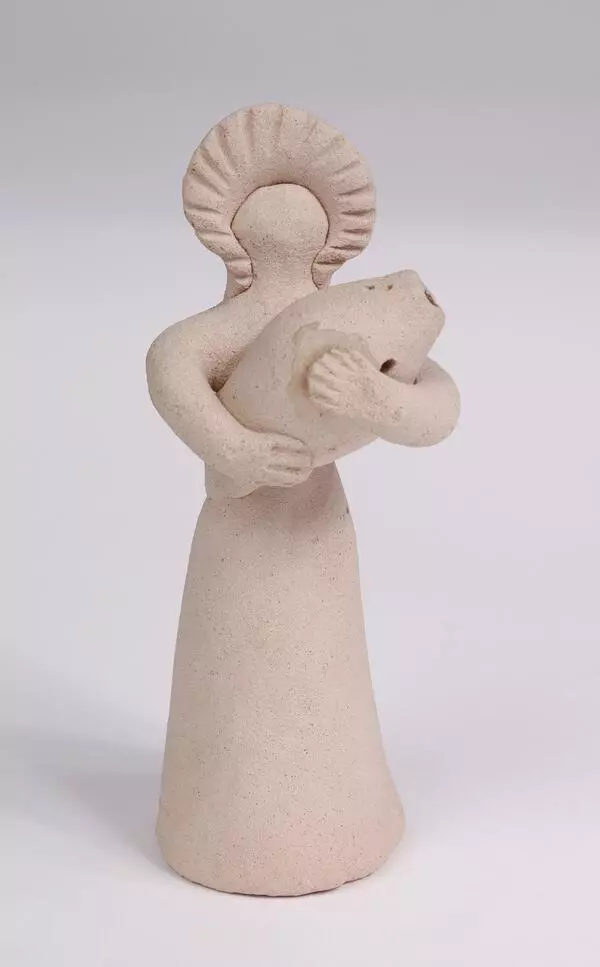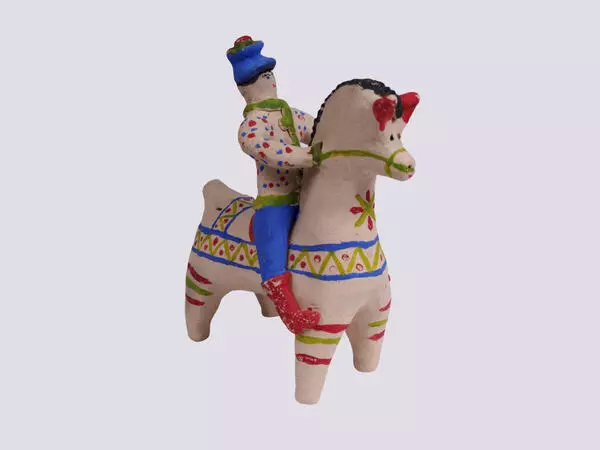The “Horseman” is made in the traditions of Stary Oskol clay toys. The figurine is decorated with acrylic paints.
Pottery was one of the first crafts to emerge in Stary Oskol. Once the Stary Oskol frontier fortress had been transformed into a regular town, the military service of the Cossacks who had founded the settlement was abolished. Most of the Cossacks joined the category of state peasants and artisans. The Cossack settlement saw a gradual development of pottery, which survived until the mid-20th century. Along with the traditional pottery craftsmen made clay toys. Easy to make, the toy was molded to fill the place in the kiln between the large vessels. It was cheap and very popular. Each craftsman had their own technique of making toy whistles. But all of them were based on certain traditions that have survived to this day.
The Stary Oskol toys are characterized by a lively and naïve image, soft sculptured forms, uneven surface texture, and clear deep sound of whistles. In the early 20th century, the trade began to disappear, as clay handmade toys could not compete with the manufactured ones.
Sisters Olga Mikhailovna (1913–1997) and Natalya Mikhailovna (1918-2010) Goncharovs are the founders of the present industry of clay toys. The sisters acquired their skills of clay toy modeling in the 1920s, having learned them from their parents. As the living keepers of centuries-old traditions they revived the art of clay toy modeling of Stary Oskol, preserved its originality and passed the secrets of their skill to their apprentices.
The technique of modeling is as follows: a figurine is modeled from a lump of clay, the other parts and elements (headdress, clothing, etc.) are superimposed. The figurine is fired at a temperature of 200 to 850 degrees for 3 hours. At full firing, the clay becomes light. To paint figurines watercolors and tempera paints are used, nowadays ceramic paints are common too. The toys traditionally feature the figures of bears, horses, deer, birds, ladies, and riders.
Pottery was one of the first crafts to emerge in Stary Oskol. Once the Stary Oskol frontier fortress had been transformed into a regular town, the military service of the Cossacks who had founded the settlement was abolished. Most of the Cossacks joined the category of state peasants and artisans. The Cossack settlement saw a gradual development of pottery, which survived until the mid-20th century. Along with the traditional pottery craftsmen made clay toys. Easy to make, the toy was molded to fill the place in the kiln between the large vessels. It was cheap and very popular. Each craftsman had their own technique of making toy whistles. But all of them were based on certain traditions that have survived to this day.
The Stary Oskol toys are characterized by a lively and naïve image, soft sculptured forms, uneven surface texture, and clear deep sound of whistles. In the early 20th century, the trade began to disappear, as clay handmade toys could not compete with the manufactured ones.
Sisters Olga Mikhailovna (1913–1997) and Natalya Mikhailovna (1918-2010) Goncharovs are the founders of the present industry of clay toys. The sisters acquired their skills of clay toy modeling in the 1920s, having learned them from their parents. As the living keepers of centuries-old traditions they revived the art of clay toy modeling of Stary Oskol, preserved its originality and passed the secrets of their skill to their apprentices.
The technique of modeling is as follows: a figurine is modeled from a lump of clay, the other parts and elements (headdress, clothing, etc.) are superimposed. The figurine is fired at a temperature of 200 to 850 degrees for 3 hours. At full firing, the clay becomes light. To paint figurines watercolors and tempera paints are used, nowadays ceramic paints are common too. The toys traditionally feature the figures of bears, horses, deer, birds, ladies, and riders.
